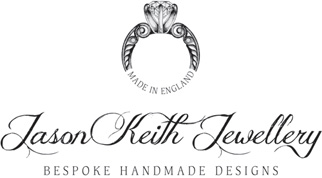The Ultimate Guide to Choosing the Perfect Engagement Ring

Introduction: Choosing an engagement ring is a significant milestone in the journey towards marriage. This timeless piece of jewellery symbolizes love, commitment, and the promise of a lifelong partnership. With countless options available, finding the perfect engagement ring can be a daunting task. In this guide, we will explore various aspects of engagement rings, from […]
Settings For Engagement Rings
Settings for engagement rings. So you’re looking to propose to your loved one, you head out to the high street or fire up the Mac to start looking and all of a sudden theres more than one type of Engagement ring available with just about any shape of diamond you can think of. Not only […]
The Process of making.
My process of making. Engagement rings. The process of making an engagement ring. Engagement rings are beautiful, complex and detailed. There is a lot of time, design and craftsmanship put forward to make them. Thought needs to go into strength and how the piece will wear over time. With technology moving the jewellery trade forward […]
How to care for your favourite pieces of jewellery
How to care for your favourite pieces of jewellery Caring for your Jewellery. I often get asked about Cleaning and Caring for Your Jewellery, whether its for a piece I’ve made or not. It really goes without saying that if you look after the jewellery you have it will last and stand the […]
The Difference between Platinum and Gold
The difference between Gold and Platinum. The Difference between Platinum and Gold. Is Platinum really better than Gold? How strong is platinum really? These are just a couple of questions I’m going to tackle in this short but sweet post. To answer these questions we have to understand a little history of Precious Metals, how […]
Guide to buying an engagement ring
In the market for an Engagement ring? Look no further. I’ve put together a comprehensive guide to help. About My Guide. When choosing an engagement ring, wedding ring or diamond, there are many factors to consider: What shape, what size, what colour, what quality, what cut, what setting? The list can be overwhelming. When investing […]
Tanzanite And Diamond Ring
My Client and The Tanzanite Diamond Ring. My Client. First off I should say I love blue stones. So I was pretty excited to get a call to potentially make a Tanzanite and Diamond ring. My Client wanted something to wear on special occasions but without being to dramatic. They wanted a tanzanite, oval and […]
Two Tone Wedding Ring
Two Tone Bands and How My Process works Meeting the Client. I met my client at a Wedding Fayre I was exhibiting at recently. They wanted to make a wedding ring using the gold from a wedding ring that belonged to a family member. I explained that this was defiantly possible and we should set […]
The 4ct Diamond Ring.
The Diamond Ring process and How it works. Meeting the Client. So Ive been meaning to put this on for a little while, I made this beautiful 4ct diamond cushion cut ring for such a lovely client recently. A few months ago I was approached to make a diamond ring. This was no ordinary ring […]
Camera Cufflinks for a Photographer
Earlier this year Jason was commissioned to make a pair of cufflinks for a photographer’s 40th birthday.
